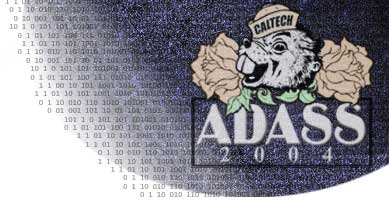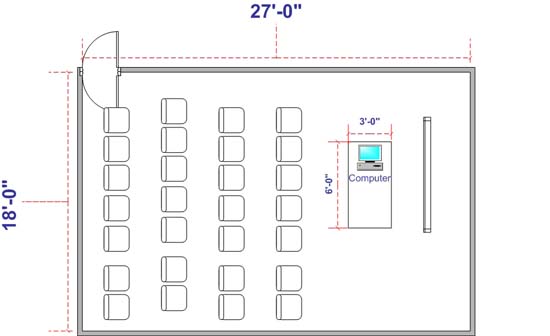Astronomical Data Analysis Software & Systems XIVOctober 24 - 27, 2004
|

| Conference |
| Calendar |
| Schedule |
| Events |
| Register |
| Financial Aid |
| ADASS Guidelines |
| Submit Abstracts |
| Manuscripts |
| Sponsors |
| Travel |
| Travel and Accommodations |
| ADASS |
| XIV Home |
| ADASS.Org |
Focus Sessions in Aspen
Tentative
Monday, October 25th
| Time | Exhibit | Session |
| 10:30 - 11:00 | Title: VOSpec: A tool for handling Virtual Observatory compliant Spectra Presenter: Pedro OSUNA (ESAC/ESA) Abstract: The VOSpec tool can superimpose spectra coming from VO-compatible resources that conform to the VO Simple Spectral Access Protocol (SSAP) with three added extra fields in the VOTable through the use of an algorithm based on imensional analysis. The Focus Group Demo will consist of a general presentation of the tool, how it interacts with the VO through the usage of VO protocols and already existing tools (like VOTable, VOTable parsers, Registries, etc.) and how it olves the problem of superimposition. VU-Graph presentation will be accompanied by live demonstration of the capabilities of the tool. A rough timeline for the presentation/demo follow : - General Layout of the tool - Target/Coordinate Search and Connection to SSAP registries - Superimposition of Spectra: Dimensional Equation solution - Display of superimposed spectra for different instruments with different units: the case of the Short Wavelength Spectrometer (SWS) and the ong Wavelength Spectrometer (LWS) of the Infrared Space Observatory (ISO). - Display of spectra from different wavelengths: the Infrared Sp ce Observatory (ISO) and International Ultraviolet Explorer (IUE) cases - Display of local VOTable compatible resources to allow users to compare their data with VO-obtained spectra: the XMM-Newton and Chandra case . - Display of local VOTable data: HST, SPITZER and VLT cases. - A spectrum display of the whole wavelength range using different VO-compatible spectra. |
DM1 |
| 12:30 - 13:00 | Title: XSA : XMM-Newton Science Archive Presenter: Christophe ARVISET, ESA / ESAC Abstract: The XMM-Newton Science Archive (XSA) is located at ESAC (European Sp ce Astronomy Centre, previously called VILSPA), near Madrid, Spain. It as been available to scientific community since mid April 2002 at http://xmm.vilspa.esa.es/xsa/. In this demo, we will show all the facilities which makes the XSA on of the most user friendly and powerful scientific archives, in particul r: - Powerful, complex and easy to build queries against the observatio s and exposures catalogues - Unique search capabilities against the XMM-Newton source catalogue - User configurable query panels and results display - Product visualization tools - Product direct retrieval with a single click - Customizable product retrieval via a shopping basket - Link to the articles related to an observation - On-the-Fly Reprocessing capabilities |
DM2 |
| 13:15 - 13:45 | Title: TOPCAT & STIL: Starlink Table/VOTable Processing Software Presenter: Mark Taylor (Starlink, Bristol University) Abstract: The Starlink Tables Infrastructure Library (STIL) is a pure-Java, open source library for I/O and manipulation of tabular data such as astronomical catalogues. It is written to be high-performance, and to cope with large tables (not limited by available memory). The core library is format-neutral, with the work of serialization and deserialization performed by pluggable format-specific I/O handlers. This means that the programmer sees a high-level abstraction of a table which is easy to work with, and also that support for new data formats can be added easily. A corollary is that conversion between any of the supported formats is trivial. Supplied handlers provide support for VOTables, FITS table extensions, relational databases via SQL and plain text tables, amongst others. The VOTable handler, which has VOTable-specific as well as generic table features, is believed to be the only existing library capable of reading or writing all the defined VOTable serialization formats (TABLEDATA, FITS, BINARY). TOPCAT, based on STIL, is a user-friendly graphical program for viewing, analysis and modification of tables. It has facilities for plotting, crossmatching, row selection, sorting and metadata manipulation. Synthetic columns can be created and row selections made using a powerful and extensible algebraic expression language. We will demonstrate TOPCAT's analysis, matching and editing facilities, and describe how STIL can be used to read or write VOTables or other tables in your own programs. We will also demonstrate command-line utilities which provide scriptable access to some of this functionality. |
DM3 |
| 15:30 - 15:45 | Title: The National Virtual Observatory Presenter: Robert Hanisch, Space Telescope Science Institute Abstract: We will show highlights of the most recently developed US NVO science applications and tools. |
DM4 |
Tuesday, October 26th
| Time | Exhibit | Session |
| 10:30 - 11:00 | Title: Taming the Measurement Equation with MeqTrees. Presenter: J.E. Noordam, ASTRON Abstract: A Measurement Equation is used to predict values of the data measured with a particular instrument, e.g. a radio telescope. It is a combined model of the instrument and the observed object(s). One way of implementing an arbitrary M.E. is by means of 'MeqTrees', which can also be used to solve for arbitrary subsets of its parameters. We will demonstrate how the use of a more complex M.E. gives better results than using the ones that are implicit in existing radio astronomy reduction packages. |
DT1 |
| 12:30 - 13:00 | Title: Montage: An Astronomical Image Mosaic Service for the NVO Presenter: Anastasia Clower Laity, Infrared Processing and Analysis Center, Caltech Abstract: Montage is a software system for generating astronomical image mosaics according to user-specified size, rotation, WCS-compliant projection and coordinate system, with background modeling and rectification capabilities. Its architecture has been described in the proceedings of ADASS XII and XIII. It has been designed as a toolkit, with independent modules for image reprojection, background rectification and co-addition, and will run on workstations, clusters and grids. The primary limitation of Montage thus far has been in the projection algorithm. It uses a spherical trigonometry approach that is general at the expense of speed. The reprojection algorithm has now been made 30 times faster for commonly used tangent plane to tangent plane reprojections that cover up to several square degrees, through modification of a custom algorithm first derived by the Spitzer Space Telescope. This focus session will describe this algorithm, demonstrate the generation of mosaics in real time, and describe applications of the software. In particular, we will highlight one case study which shows how Montage is supporting the generation of science-grade mosaics of images measured with the Infrared Array Camera aboard the Spitzer Space Telescope. |
DT2 |
| 13:15 - 13:45 | Title: A Demo of Python Tools for Analysis and Visualization of Astronomical Data Focus Demo Handout Presenter: Perry Greenfield, STScI Abstract: We will demonstrate a number of the Python modules and packages that we have developed (or helped to develop) as part of the Space Telescope Science Institute's efforts to make Python a productive data analysis environment for both interactive use and application development. We will demonstrate the use of the multi-dimensional array package numarray, PyFITS, numdisplay (a DS9 display package for arrays), and matplotlib, with particular emphasis on matplotlib, a new 2D plotting package. |
DT3 |
| 15:30 - 16:00 | Title: Spitzer Pride - Science User Tools Presenter: Trey Roby, SSC Caltech Abstract: Spitzer(formerly SIRTF) Science Center has supplied astronomy communitywith a set of science user tools called Spitzer Pride. They are Spot(the planning tool), Leopard(the archive client), and Subscriber(the file downloading application). We will discuss the whole system design of client-middlware-server briefly. The session will focus on how the set of tools working together, how they were designed to use the common set of Java classes to give the familiar look and feel, how they communicate to keep each other auto-updated at the same time. The tools can be run on Solaris, Windows, Linux, and Mac OSX platforms. |
DT4 |
| 17:30 - 18:00 | Title: Unasigned Presenter: Abstract: |
DT5 |
Wednesday, October 27th
| Time | Exhibit | Session |
| 10:30 - 11:00 | Title: New Software for Ensemble Creation in the Spitzer-Space-Telescope Operations Database Presenter: Russ Laher Abstract: Some of the computer pipelines used to process digital astronomical images from NASA's Spitzer Space Telescope require multiple input images, in order to generate high-level science and calibration products. The images are grouped into ensembles according to well-documented ensemble-creation rules by making explicit associations in the operations Informix database at the Spitzer Science Center (SSC). The advantage of this approach is that a simple database query can retrieve the required ensemble of pipeline input images. New and improved software for ensemble creation has been developed. The new software is much faster than the existing software because it uses pre-compiled database stored-procedures written in Informix SPL (SQL programming language). The new software is also more flexible because the ensemble-creation rules are now stored in and read from newly defined database tables. This table-driven approach was implemented so that ensemble rules can be inserted, updated, or deleted without modifying software. |
DW1 |
| 12:30 - 13:00 | Title: RedShift 5 - Virtual Planetarium for Amateurs and Professionals Presenter: Sergey Kudryavtsev Abstract: RedShift is a desktop planetarium developed over more than 10 years by Maris Technologies, Ltd. The latest, 5th version of the program includes: - the complete Hipparcos and Tycho-2 stellar catalogues (2,5 mln stars) as well as some 15 mln stars of up to the 14th-15th mag from the Hubble Guide Star Catalog, ver.2.2; - the newest version of the General Catalogue of Variable Stars and New Catalogue of Suspected Variable Stars; - Catalogue of Principal Galaxies (70,000+ objects) plus latest catalogues of optically visible open clusters and nebulae, radio and X-ray sources, quasi-stellar objects and BL Lacertae; - updated catalogues of more than 50,000 asteroids and 1,500 comets; - expanded collection of images of galactic and extragalactic objects from Messier and Caldwell catalogues; - revised high resolution maps of planets obtained from the latest space missions; - all natural moons of planets including recently discovered moons of Jupiter, Saturn, Uranus, Neptune; - night vision option (screen dimming and reddening) useful for observers; - macro-player to view the collection of guided tours of space; - solar eclipses maps; - quick set-up of the sky view with newly integrated Open GL technologies. The database of asteroids, comets and spacecraft can be easily updated through importing the latest orbital elements from NORAD, MPC and other Internet resources. The family of RedShift 5 will be expanded by release of a special version for Beginners (Autumn 2004) and the College Edition version (Spring 2005). |
DW2 |
| 13:15 - 13:45 | Title: Unasigned Presenter: Abstract: |
DW3 |
| 15:30 - 16:00 | Title: Unasigned Presenter: Abstract: |
DW4 |



For additional information please contact adass@ipac.caltech.edu